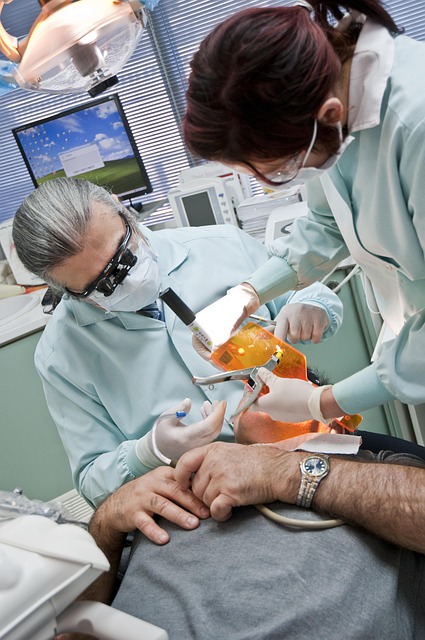Healthcare offices require comprehensive coverage for healthcare offices to navigate unique security challenges, including protecting sensitive patient data and valuable assets. This involves robust cybersecurity solutions, advanced physical security systems like access control and surveillance, general liability, professional malpractice, and tailored policies for equipment and records. In the digital era, addressing heightened cyber risks through regular assessments, employee training, and encryption is vital. Physical security measures such as secure entry points, alarms, and staff training are crucial. Employee training on security protocols strengthens data protection against threats like phishing. Compliance with regulations like HIPAA and OSHA ensures legal safety and patient trust.
In today’s digital age, securing medical offices goes beyond traditional methods. Understanding the unique security needs of healthcare practices is essential to protect sensitive patient data. This article explores comprehensive coverage options tailored for medical practices, emphasizing cyber liability protection as a modern essential. From physical security measures and employee training to regulatory compliance, discover proven strategies to safeguard your practice and ensure peace of mind. Implement these steps to secure robust coverage for healthcare offices and mitigate potential risks.
- Understanding the Unique Security Needs of Healthcare Offices
- Comprehensive Coverage Options for Medical Practices
- Cyber Liability Protection: A Modern Essential
- Physical Security Measures to Deter and Respond to Threats
- Employee Training: The Human Element of Security
- Regulatory Compliance and Its Role in Office Safety
Understanding the Unique Security Needs of Healthcare Offices

Healthcare offices present unique security challenges that require specialized solutions. Unlike traditional businesses, medical facilities handle sensitive patient data, making data security and privacy paramount. Additionally, they often store valuable equipment and medications, necessitating robust physical security measures. The risk of theft, vandalism, or accidental data breaches can have severe consequences for patients and the practice itself.
Therefore, comprehensive coverage for healthcare offices is essential. This includes both cybersecurity solutions to protect digital records and physical security systems like access control, surveillance cameras, and alarm systems. By understanding these specific needs, medical office managers can ensure they are adequately prepared to safeguard their operations, patients, and assets.
Comprehensive Coverage Options for Medical Practices

When it comes to securing a medical office, comprehensive coverage options are essential. Healthcare practices require robust insurance plans that cater to their unique risks and liabilities. This includes general liability coverage to protect against accidents or injuries on premises, as well as professional liability insurance to safeguard against malpractice claims.
In terms of coverage for healthcare offices, specific considerations should be given to medical equipment, technology, and patient records. Medical malpractice, data breach, and property damage are potential risks that can be mitigated with tailored policies. Additionally, business interruption coverage ensures continuity during unforeseen events, while worker’s compensation insures against on-the-job injuries among staff.
Cyber Liability Protection: A Modern Essential

In today’s digital age, healthcare offices are not only facing traditional security threats but also increasingly complex cyber risks. Cyber liability protection has become an essential component of overall risk management for medical practices. As more patient data becomes digitized and stored electronically, the potential for data breaches and cyberattacks increases significantly.
Coverage for healthcare offices should include robust cybersecurity measures to safeguard sensitive patient information. This includes regular security assessments, employee training on cybersecurity best practices, and advanced encryption technologies. By implementing these proactive steps, medical practices can mitigate the risk of data breaches, reduce financial losses, and maintain patient trust—all of which are crucial for a secure and successful healthcare operation.
Physical Security Measures to Deter and Respond to Threats

Implementing robust physical security measures is paramount for any medical office seeking comprehensive coverage for healthcare offices. Start with secure entry points, utilizing access control systems and surveillance cameras to monitor who enters your premises. This not only deters unauthorized individuals but also provides invaluable visual evidence in case of an incident.
Further strengthen your office’s defenses with robust door locks, alarm systems, and perimeter security lighting. Regularly test and maintain these systems to ensure their effectiveness. Training staff on emergency procedures and conducting mock drills can significantly enhance preparedness should a threat arise, allowing for swift and efficient response.
Employee Training: The Human Element of Security

In the realm of healthcare, where sensitive patient data is paramount, employee training stands as a cornerstone of comprehensive security measures for medical offices. The human element of security cannot be overlooked, as staff members are often the first line of defense against potential threats and errors. Adequate training equips employees with the knowledge to recognize and respond to various security challenges, from phishing attempts to physical intrusions. It’s essential to ensure that every staff member understands their role in maintaining a secure environment, promoting vigilance, and fostering a culture where security is everyone’s responsibility.
Regular workshops and simulations can significantly enhance coverage for healthcare offices by keeping protocols sharp and minds alert. By addressing the human element proactively, medical practices can mitigate risks more effectively, ensuring patient data remains protected. This holistic approach not only prevents data breaches but also boosts the overall efficiency of operations in these crucial healthcare settings.
Regulatory Compliance and Its Role in Office Safety

In the dynamic landscape of healthcare, regulatory compliance is not just a legal necessity; it’s a cornerstone of office safety. Healthcare facilities, including medical offices, are subject to stringent regulations designed to protect patients and staff while ensuring quality care. Adhering to these guidelines provides comprehensive coverage for healthcare offices, safeguarding them from potential risks and liabilities. For instance, the Health Insurance Portability and Accountability Act (HIPAA) sets standards for protecting sensitive patient information, while Occupational Safety and Health Administration (OSHA) regulations focus on maintaining a safe and healthy work environment.
Regularly updating policies and procedures to align with these regulatory changes is vital. This proactive approach not only secures your practice from legal repercussions but also fosters a culture of safety and accountability. By prioritizing regulatory compliance, healthcare offices can create an environment where every interaction—from patient intake to treatment plans—is guided by the highest standards, ultimately enhancing patient trust and outcomes.
